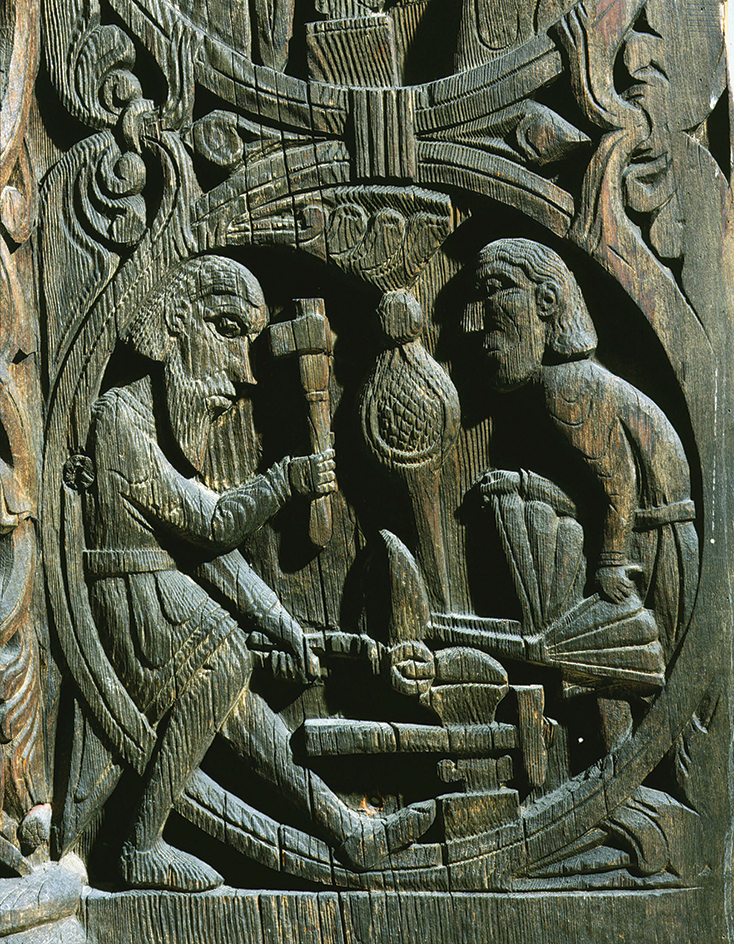Nibelungenlied, << NEE buh lung uhn `leet,` >> is a German epic poem written about A.D. 1200. The title means Song of the Nibelungs. The author is unknown but undoubtedly came from the Danube area of southeastern Germany or Austria. Several versions of the author’s story exist today. The poem inspired the famous opera cycle The Ring of the Nibelung (1876) by the German composer Richard Wagner.
The poem tells of Siegfried, who owns the fabulous Nibelung treasure and a cloak of invisibility. He has also killed a dragon and bathed in its blood. The blood hardened Siegfried’s flesh, protecting it from wounds. But a linden leaf had fallen between his shoulders while he bathed, leaving an unprotected spot on his back.

Siegfried wants to marry Kriemhild, the sister of King Gunther of Burgundy. To gain Kriemhild, Siegfried helps Gunther win the maiden Brunhild, Queen of Iceland. Brunhild will marry only the man who can overcome her in combat. So Siegfried disguises himself as Gunther, and beats Brunhild, winning her for Gunther. Years later, Kriemhild tells Brunhild that Siegfried, not Gunther, had beaten her, adding some insulting lies to the revelation. In revenge, Brunhild orders Hagen, one of Gunther’s servants, to murder Siegfried. Hagen kills Siegfried by thrusting a spear into the unprotected spot on his back.
Several years later, Kriemhild marries Etzel, mighty king of the Huns. But she never forgets Siegfried. Kriemhild invites the Burgundians to visit her and has them slaughtered. Only Hagen survives. Kriemhild asks him to reveal where he has hidden the Nibelung treasure. When he refuses, she kills him. Hildebrand, a warrior at the court of Etzel, horrified by Kriemhild’s treachery, kills her.
The background.
Two actual events form the basis for parts of the Nibelungenlied. In A.D. 437, the Huns destroyed the Burgundians, an east Germanic tribe. The Burgundian king and members of his royal household died in the battle. The king of the Huns, Attila (called Etzel in the poem), was not connected with this event. Attila died on his wedding night in 453. Some historians said that he was murdered by his Germanic bride.
The Nibelungen poet clearly was not the first to deal with this story material. The Icelandic Edda, composed before the Nibelungenlied, contains lays (short poems) on the same themes. The early Germanic peoples composed lays to celebrate the great heroes and events of their past. The lays were revised, and in the course of centuries the original historical events were greatly altered. Unknown poets combined the events of 437 and 453 into a single historic lay. In this lay, a Burgundian bride kills Attila to gain revenge for the death of her relatives, who had been killed by Attila’s Huns.
Many of the themes and much of the plot of the older Germanic lays can still be found in the Nibelungenlied, but the poet changed the material. Scholars have not been able to trace the Nibelungenlied story of Siegfried’s death to particular historical personalities and events. In fact, Siegfried’s supernatural powers give his story the quality of a fairy tale.
The style.
The Nibelungenlied is written in stanzas. Each stanza consists of four long lines of two pairs of rhymed couplets. The author shows a keen understanding of human psychology in developing the motives that cause the proud figures in the poem to act as they do. The great climaxes lie in the tense dialogues in which the rivals confront each other.
Scholars cannot say precisely what the Nibelungen poet retained and what he inserted. The courtly aspects were probably added around 1200, when courtly culture flourished in Germany. The love between Siegfried and Kriemhild, the festivals of knights and ladies, and the many heroes reflect courtly virtues. These aspects provide the softer accents that contrast with and heighten the effect of the tragic ending.
